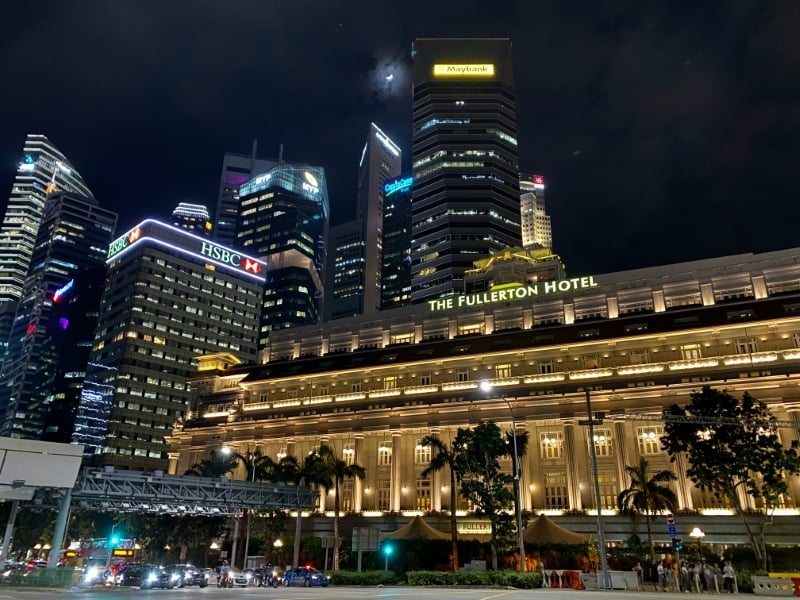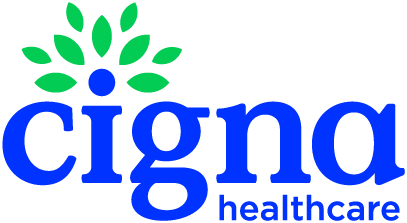
Planning to withdraw cash in Singapore? Learn how to use ATMs safely and easily, understand fees, limits, and card types accepted, and get tips from a local on the best places to withdraw money across the city.
Singapore is a modern metropolis known as the financial hub of the region, which means the banking system is top-notch. Most places take foreign credit and debit cards, mobile wallets like Apple Pay and Google Pay, and other forms of electronic payment, but you might still want a small amount of cash for small purchases like local food from hawker centres and fruits from little stores around your neighbourhood.
In that case, this blog post is for you. Here’s all you need to know about getting cash out of an ATM in Singapore, the fees you’ll need to watch out for, and plenty of tips from a local (me!) to make things go smoothly for you.
This article will take approximately 14 minutes to read. Don't have the time right now? No worries. Email the ad-free version of the article to yourself and read it later!
Disclaimer: This article may include links to products or services offered by ExpatDen's partners, which give us commissions when you click on them. Although this may influence how they appear in the text, we only recommend solutions that we would use in your situation. Read more in our Advertising Disclosure.
Contents
- Key Takeaways
- Which ATM Cards are Accepted in Singapore?
- Which ATMs Can You Use
- Where to Find ATMs in Singapore
- How to Withdraw Money Using an ATM in Singapore
- Cardless ATM Withdrawals
- ATM Fees
- Withdrawal Limits
- Opening A Singapore Bank Account
- What Happens if an ATM Eats Your Card?
- Lost or Stolen ATM Cards
- Now, on to You
Key Takeaways
- While Singapore is a cashless society, from time to time, you may still need to use cash for daily transactions
- Being a financial hub, ATMs in Singapore accept most international cards, including Visa, Mastercard, UnionPay, and American Express.
- You can find ATMs almost anywhere including at airports, MRT stations, bus interchanges, malls, and bank branches.
- When withdrawing money, you should choose to withdraw in Singapore Dollars (SGD) to get the best exchange rate and avoid conversion fees.
- Common fees include ATM withdrawal fees (S$0–S$8), foreign exchange conversion fees, and issuing bank charges (up to S$10).
- There’s normally a withdrawal limit of S$1,000 to S$2,000 SGD per transaction.
- If your card is lost or stuck in an ATM, contact the bank immediately to block and replace it.
Which ATM Cards are Accepted in Singapore?
If you have used your ATM card outside of your home country, chances are, it will be accepted in Singapore. Look for logos like Cirrus, Maestro, American Express, UnionPay, and Visa, and be sure that overseas transactions are enabled for the account your ATM card is linked to.
Being a banking hub, Singapore is also home to many foreign banks like Citibank, Wells Fargo, JPMorgan Chase, Bank of America, Bank of China, HSBC, Deutsche Bank, and countless others.
Which ATMs Can You Use
There are three main local banks in Singapore.
- DBS Bank (Development Bank of Singapore)
- UOB Bank (United Overseas Bank)
- OCBC Bank (Overseas-Chinese Banking Corporation)
* Note that another large bank is the POSB (Post Office Savings Bank), a subsidiary of DBS, but they continue to operate their own ATMs and bank branches under their original branding. Their ATMs are also widely available and will function exactly like a DBS machine.
If your bank has any of the logos mentioned above, you’ll be able to use any ATM from these local banks. You’ll also see ATMs from many other international banks like HSBC, Citibank, Standard Chartered, and Maybank, but the ‘big three’ will be the most prevalent.
Where to Find ATMs in Singapore
I used to joke that you could throw a rock and hit an ATM in Singapore. You’ll find multiple machines right around every corner, and the extensive list of locations is impressive.

In short, if you are in a populated place near the city centre, or around residential neighbourhood hubs, just go for a walk, and within 10 minutes, I almost guarantee you’ll find an ATM. However, for more precise information, here’s a list of ATM locators.
- DBS ATM Locator
- UOB ATM Locator
- OCBC ATM Locator
- Citibank ATM Locator
- HSBC ATM Locator
- Standard Chartered ATM Locator
And here are my favourite places to get money out.
Changi Airport
If you land and want cash quickly, ATM around the airport are plentiful. Fees are the same, and they work exactly like ATMs in the city centre. When I land, one of the first things I do is get a little cash out. You don’t need it for taxis or public transportation (they take cards and mobile wallets), but having a bit still gives me a sense of security.
MRT Stations
The majority of Singaporeans use the metro system daily, and most stations will have withdrawal machines from various banks. I try using the ATMs from quieter stations, as the nearer you get to the interchanges and busier central stations, the longer the queues might be to use the ATMs.
Bank Branches
If you are worried that you might need help or that your card might be problematic to use, you might want to head to a bank branch, which usually has a row of ATMs outside. That way, if anything goes wrong, you can get help immediately.
Bus Interchanges
Bus interchanges are another key part of Singapore’s efficient public transport system. They’re busy places where you can easily find ATMs, and most of them are connected to major MRT stations, so you can choose whichever is most convenient.
Related article: How to Take a Bus in Singapore: Routes, Fares, Apps, and Tips
Malls (Shopping Centres)
If you haven’t noticed, Singapore is chock-full of malls (we call them shopping centres). ATMs are usually located in the basement levels, where the food is, or outdoors, in high-traffic areas.

How to Withdraw Money Using an ATM in Singapore
Using an ATM in Singapore is simple, as our ATMs will work almost exactly like any other ATM around the world.
Put in your card with the magnetic stripe as indicated by the graphic in the card slot, and then key in your PIN. Singapore has four official languages, and you get to choose between English, Mandarin, Malay, or Tamil. If you cannot read any of these languages, you should go to a bank branch for help.
Then, select an amount under the ‘quick withdrawal’ shortcut, or key in your required amount. And this is one difference that might happen, which is that the ATM will ask you if you want the transaction to be carried out in your currency or in the local currency.
Tip: I’d recommend withdrawing in the local currency, which is Singapore Dollars (SGD). You usually will get a better rate, as the conversion will be done by your card’s issuing bank. Plus, you’ll avoid any foreign exchange conversion fees.
Cardless ATM Withdrawals
Many ATMs from the ‘big three’ banks of DBS, UOB, and OCBC also offer cardless or contactless withdrawal. If you already have your card linked to your mobile wallet, and you find an ATM with a contactless symbol, you can simply tap your phone on the reader and select the card you want to withdraw from.
The ATM will then ask you for your PIN, and the rest of the process is the same. Most ATMs also offer QR cash withdrawals, which use the bank’s mobile app, but for this, you’ll need to open a bank account with them.
ATM Fees
If you’re a frequent traveller, you’d already know that getting cash out of a foreign ATM can incur some annoying fees. Although the withdrawal and exchange fees aren’t that substantial if it is just a one-time transaction, they can add up significantly if you are in a particular country for a long time, or if you’re spending a lot of time on the road.
There are three fees you’ll need to watch out for.
Singapore ATM Withdrawal Fees
This fee is what the bank’s ATM charges. Most ATMs from DBS, UOB, and OCBC will charge zero fees, especially if your issuing bank is a major one from countries with a big community in Singapore, like Australia, India, China, the UK, and the US.
However, depending on your bank, UOB and DBS can charge up to 5 SGD for overseas cards, and OCBC charges up to 8 SGD for specific cards.
Foreign Exchange Conversion Fees
Your issuing bank might also charge foreign exchange conversion fees. To avoid this, when you are withdrawing cash and the ATM asks you whether you want to pay in your home currency or in SGD, always select SGD, as I’ve mentioned before.
If you pick your home currency, you might get a less favourable rate and incur the conversion fees that your issuing bank might charge.
Issuing Bank Withdrawal Fees
This fee is from your issuing bank. Some banks don’t charge for overseas transactions, and some can charge up to 10 SGD or your home currency equivalent. You’ll need to check with your issuing bank on this one.
Withdrawal Limits
To avoid paying excessive fees, try withdrawing a larger amount with the least frequency. Most fees are charged per transaction, so if you’re withdrawing $200 daily, that makes less financial sense than withdrawing $1,000 at a go.
That’s where withdrawal limits come in. Your bank account will already have a withdrawal limit, and you’ll have to check with them what that is.
On the Singaporean ATM side, the amount will depend on your bank, as each one has its own daily, weekly, and monthly limits. However, as a general rule, ATMs in Singapore typically have a $1,000 to $2,000 limit per transaction.
I know my limits in Singapore, so this doesn’t apply to me, but when using an ATM overseas, I typically go for a large amount first, and if that amount exceeds the limits, I’ll start scaling down slowly until I hit the maximum limit and the transaction goes through.
It takes more time, but it will help you save on a second transaction fee, as well as determine your withdrawal limit for future reference.
Opening A Singapore Bank Account
If you’re an expat who lives in Singapore with a valid pass, you can easily open an account in Singapore. For this, you’ll need a valid Employment Pass (EP), Student Pass, or Long-Term Visit Pass. You’ll require a minimum initial deposit that ranges from S$1,000 to S$3,000, a valid residence pass, a passport, and proof of address like a rental agreement or utility bill.
Opening a bank account in Singapore usually requires a minimum initial deposit, which varies by bank and account type. For basic savings accounts, some banks may waive the initial deposit requirement for online applications. However, others may require a minimum of S$1,000 to S$3,000 to get started.
Some banks also require you to maintain a minimum monthly balance that can range from S$1,000 to S$3,000. If your balance falls below this amount, you can be charged a fall-below fee, which is usually S$5.
Related articles:
What Happens if an ATM Eats Your Card?
Although unlikely, if an ATM in Singapore swallows your card and you are at a bank branch, look for help inside the branch. They can help retrieve your card, but make sure you have some ID on you. You can also look at the bank’s helpline numbers, which are displayed prominently on every ATM. Don’t worry if you’ve got an overseas phone number, as they should have a toll-free number to call.
If all else fails and you are unable to retrieve your ATM card, repeat the steps as though you lost your card, which is to block the card and request a new one.
Lost or Stolen ATM Cards
Stolen ATM cards are rare, as they obviously cannot be operated without your secure PIN. However, losing your card is more common than you think, and I myself have been guilty of being careless.
First thing I’d do is get onto my mobile banking app and block the card as soon as possible. Then, request a replacement and have it sent to an overseas address. Most banks (like my bank, DBS) will not send it to an unknown overseas address, so the quickest way is to have it sent to the address registered with your bank, then have someone in your country forward it to you, wherever you currently are.
If this isn’t possible, you might want to change your registered address with your bank temporarily, get the card sent to a trusted friend or family member, who can then forward it to you.
If your card was stolen, report the loss to the police, as this will prevent future unauthorised transactions and limit your liability.
In my case, my card arrived at a family member’s within 3 working days, who then DHL’ed it to me. Less than a week had passed from the time I lost my card to the time I received a replacement and the temporary PIN, which was sent separately.
Now, on to You
That’s all I have for you on using ATMs in Singapore. However, as I’ve already mentioned, Singapore has been a cashless society for a while now. It has gotten to the point that I can pay for my fruits at a street vendor through electronic means, which is my preferred payment method, as that means I don’t have to deal with lugging around coins all the time.
To give you a rough idea, I spent about S$100 to S$200 in cash every month in Singapore. I use my mobile wallet for everything else, from groceries and food to transport and entertainment, but of course, your credit card will work just as well.







